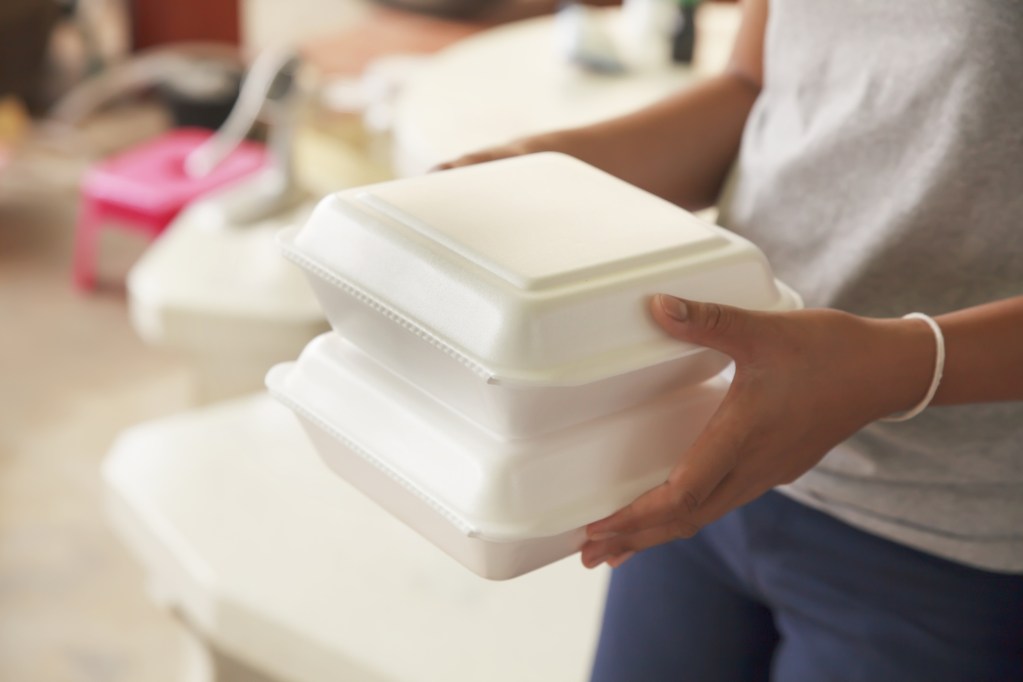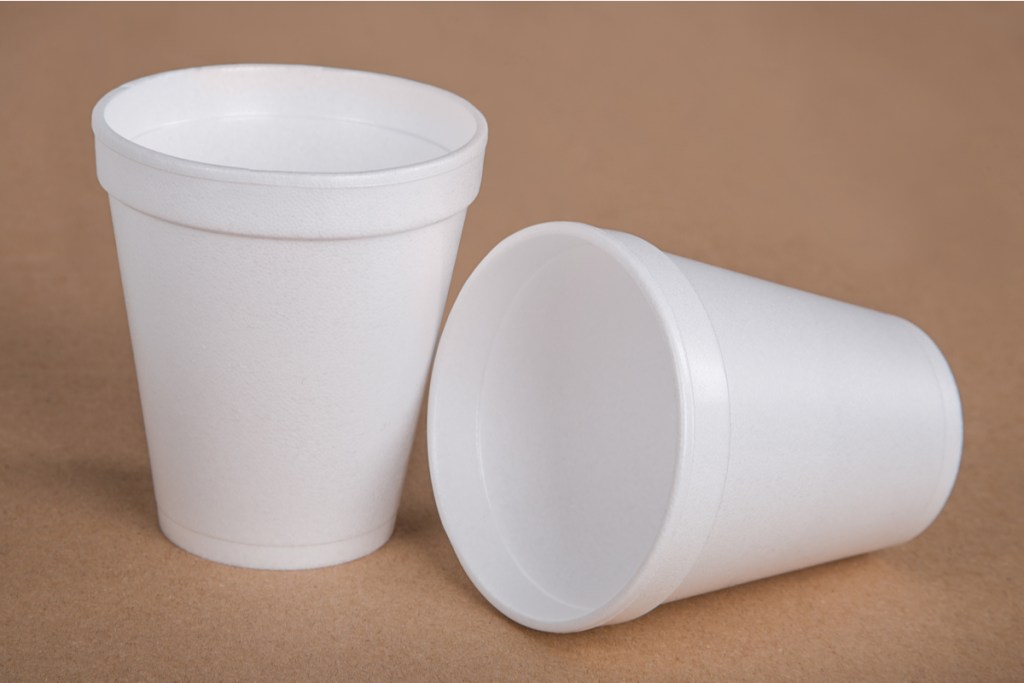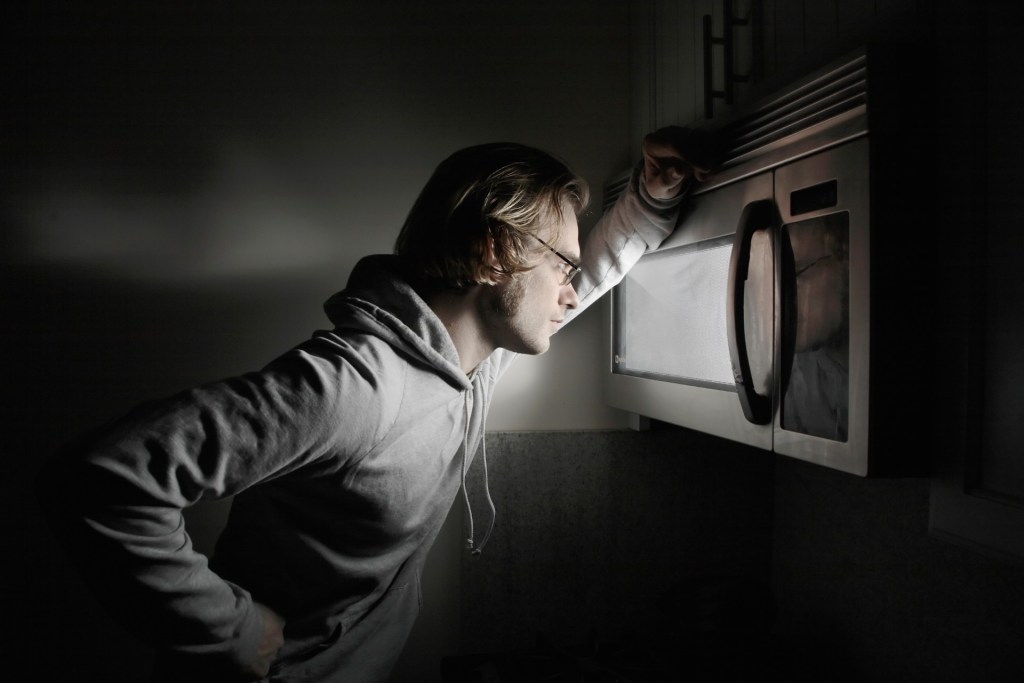Food Taste Funny After Heating Up Styrofoam Plate
Sure, we all love to cook delicious, gourmet meals that our friends and family salivate over, but sometimes, we just don't have the time. Whether you're heating up yesterday's leftovers or reheating lukewarm takeout, the microwave is the busy homeowner's best friend.
Of course, while the microwave wins when it comes to convenience, that doesn't meanevery food container belongs in there. Depending on the type of container you have, you might just need to take a few extra seconds to transport your food to a microwave-safe plate. Metal-based materials, for instance, can't go in the microwave since the waves can't penetrate metal. If you've ever accidentally put aluminum foil or tins in your microwave, then you know how quickly the containers heat up — they might even catch fire. With a few exceptions, most glass and ceramic products are microwave safe, but they may not be practical for transporting or storing foods. So that leaves styrofoam. But can you microwave styrofoam or even heat styrofoam at all?
Read this before you put your styrofoam bowls, cups, or plates in the microwave.
What is styrofoam?
Trademarked by The Dow Chemical Company, the term 'styrofoam' actually refers to a type of polystyrene foam commonly used in the building industry. Over the years, the term has often been misused when referring to an expanded polystyrene foam that's injected into molds to make disposable plates, cups, and take-out containers.
Polystyrene containers are cheap to manufacture and are excellent at keeping foods and beverages warm, making them a popular choice in the food industry. But over the past several years, there has been a growing backlash against single-use polystyrene containers due to environmental and potential health concerns. Indeed, many states, cities, and local governments have banned the use of polystyrene in recent years.
It can actually take about 50 years for a styrofoam coffee cup to decompose, and sadly, styrofoam and other plastics make up about 30 percent of all landfill volume in the United States.
From a health perspective, styrofoam-based products contain a compound called styrene, which has been linked to cancers in animal and human studies. There is an increased risk of styrene leaking into foods when containers are microwaved. This is especially true for fatty foods.
Can you safely microwave or heat styrofoam cups or other food containers?
Food-use styrofoam containers, made from expanded polystyrene, are not oven safe. These styrofoam containers will begin to soften at 212 degrees Fahrenheit and actually melt at 464 degrees. They are, however, safe to use for storing food in the refrigerator but never to cook or reheat in the oven.
The Food and Drug Administration (FDA) does regulate plastic and polystyrene containers, cups, and plates and tests their safety and use in microwave ovens, making sure that the amount of chemicals that leach out isn't higher than 100 to 1,000 times lower than the amount that has proven to hurt lab animals. Any container that achieves that can be outfitted with a microwave-safe label indicating they have been tested for safety in the microwave. Look for the microwave-safe labeling on any styrofoam containers before putting them into the microwave.

A few more things regarding microwave reheating:
- If you can't verify that your styrofoam container is microwave safe, transfer the food to a glass or ceramic container labeled microwave safe.
- If you want to cover foods while reheating in the microwave, use wax paper, parchment, or even paper towels. Don't allow plastic wrap to contact food while microwaving, as it may melt during the heating process.
- Those plastic tubs that hold yogurt, cream cheese, mayonnaise, and other foods may be tempting to use as extra food storage in the fridge, but they are not microwave safe.
- Any plastic containers that are cracked, scratched, or microwaved many times can begin to leach out harmful plastic into your food.
- If you aren't sure if you have a microwave-safe container, you can always transfer the food to a pot or pan and reheat it on the stove or in the oven.
If you are unsure of your food containers' microwave safety, don't use them. By being diligent and reading labels, you'll be able to enjoy the convenience of microwave heating while still keeping you and your family safe.
Editors' Recommendations
- Beef cheek meat: The super cheap thing you're not buying that will elevate your dinner game (really!)
- 7 super inventive ways to organize a small kitchen we learned on TikTok
- Start the morning off right with these 9 Mediterranean diet breakfasts
- Carbon steel vs. cast iron frying pans: Which cookware is better?
- Here's how to spring-clean your entire house in just 8 hours
Source: https://www.21oak.com/hacks-how-tos/can-you-heat-styrofoam-dishware/


0 Response to "Food Taste Funny After Heating Up Styrofoam Plate"
Post a Comment